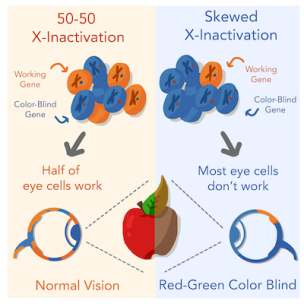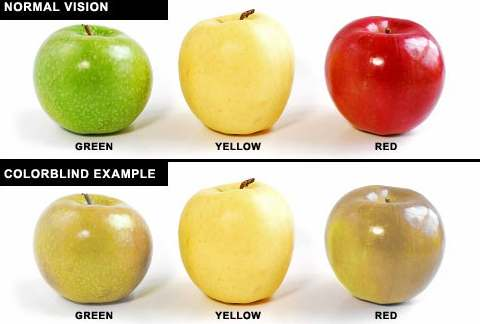Color blindness is not always inherited, there are many other factors as well that are responsible for causing color blindness among people which includes macular degeneration, diabetic retinopathy, glaucoma, any Injury to the eye and aging as well. Multiple factors are anticipated to influence the market growth. The market growth is anticipated to be primarily driven by increasing government initiatives toward health awareness; rise in healthcare expenditure worldwide and growing cases of color blindness is expected to fuel the growth of the global color blind test market
Color blindness occurs when you are unable to see colors in a normal way. It is also known as color deficiency. Color blindness often happens when someone cannot distinguish between certain colors. This usually happens between greens and reds, and occasionally blues, according to American Academy of Ophthalmology.
In the retina, there are two types of cells that detect light. They are called rods and cones. Rods detect only light and dark and are very sensitive to low light levels. Cone cells detect color and are concentrated near the center of your vision. There are three types of cones that see color: red, green and blue. The brain uses input from these cone cells to determine our color perception.
Color blindness can happen when one or more of the color cone cells are absent, not working, or detect a different color than normal. Severe color blindness occurs when all three cone cells are absent. Mild color blindness happens when all three cone cells are present but one cone cell does not work right. It detects a different color than normal.
There are different degrees of color blindness. Some people with mild color deficiencies can see colors normally in good light but have difficulty in dim light. Others cannot distinguish certain colors in any light. The most severe form of color blindness, in which everything is seen in shades of gray, is uncommon. Color blindness usually affects both eyes equally and remains stable throughout life.
 Market size
Market size
As per a new report by WiseGuyReports’ ‘Global Color Blind Test Market Size, Status and Forecast 2019-2025, the global color blind test market is anticipated to witness steep growth in the next few years. Color blindness actually results from the light-sensitive pigments in the cones of the retina that receive wrong genetic coding for wavelengths of light. Color blindness testing is a part of Eye care test which is done to detect red/green color deficiencies among people. Increasing color blindness problem among people have resulted in the expansion of color blind test market.
Color blindness is not always inherited, there are many other factors as well that are responsible for causing color blindness among people which includes macular degeneration, diabetic retinopathy, glaucoma, any Injury to the eye and aging as well. Multiple factors are anticipated to influence the market growth. The market growth is anticipated to be primarily driven by increasing government initiatives toward health awareness; rise in healthcare expenditure worldwide and growing cases of color blindness is expected to fuel the growth of the global color blind test market.
Also the advancement in technology has made testing of color blindness easier and comfortable. However, inadequate reimbursement policies and lack of awareness among people might hinder the growth of color blind test market to certain extent.
 Contact lenses to correct color blindness
Contact lenses to correct color blindness
Researchers in the United Arab Emirates have developed contact lenses that can help to correct color blindness. Containing gold nanoparticles, the lenses help to increase red-green contrast in wearers while also functioning as corrective lenses. The particles give the lenses a rose tint, which will hopefully result in wearers having a more positive experience when viewing the world, rather than the misplaced optimism typically associated with such tinted eye wear.
Red-green color blindness can pose a variety of challenges, such as having difficulty knowing when to stop at traffic junctions in response to a red light. Researchers have been developing ways to improve red-green contrast for those who experience such color blindness.
One solution is to use red-tinted glasses. However, such glasses are bulky, and not everyone likes wearing glasses. To address this, these researchers have been developing contact lenses that can achieve similar results. Initially, they tested lenses that had been dyed pink, but noticed that they leeched dye, meaning that they were unstable and potentially unsafe.
The team then turned to gold nanocomposites, which have been used for centuries to create “cranberry glass,” which has a pink hue. The researchers mixed gold nanoparticles into a hydrogel and used this to fabricate the lenses. The pink-tinted constructs filtered light between 520–580 nm, which is where the wavelengths of red and green light coincide.
So far, the researchers have tested the effectiveness and safety of the lenses in the lab. They found that the modified lenses were not toxic in cells grown in vitro and had similar water retention properties as commercial lenses, suggesting that they are safe for use.
They compared the gold nanoparticle-modified lenses to two types of tinted glasses that are available commercially for those with color blindness and found that the lenses were more highly selective in blocking certain wavelengths than the glasses. The next steps will involve human trials to see if the lenses are comfortable and can successfully help with red-green contrast in those with color blindness.














